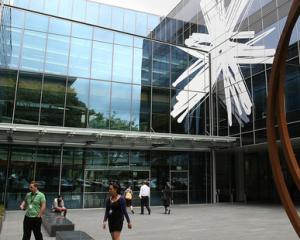As the two rivals were holding a press conference announcing their plans to combine their respective expertise, the New Zealand Regional Fibre Group released its plans.
The RBI seeks to provide fibre to 97% of rural schools and a minimum 5-megabits-per-second broadband service to 80% of rural households within six years.
The joint proposal includes Telecom building fibre to schools and hospitals, cell sites and rural exchanges and cabinets.
Vodafone will be responsible for the design and construction of tower infrastructure where Vodafone and Telecom XT will co-locate their mobile services.
The fibre and cell towers will be open access, the key to the proposal winning approval from the Ministry of Economic Development, which is expected to recommend a successful tender to the Government before Christmas.
Negotiations on the $285 million contract are expected to also open next month.
Otherwise, details were vague on what Telecom and Vodafone would spend on the bid and exactly what it all meant.
To much laughter at the Auckland-based press conference, the Otago Daily Times asked whether the rural communities of Otago and Southland featured in the plans of the joint venture.
Up until then, the questions had been around things like dark fibre, whether the two established players would keep competing, the height of the towers and open access.
Vodafone chief executive Russell Stanners said the southern rural communities did feature in the plans and he had received letters of support from rural leaders for the plan.
Chorus chief executive Mark Ratcliffe did admit 3% of New Zealand's rural community would not be covered by the joint venture, mainly because of accessibility.
The ODT has in the past asked questions of the established players about satellite coverage for some of the south's more remote rural outposts which were bordered by hills or mountains. It is likely those remote areas will be eventually receive satellite internet coverage.
Mr Ratcliffe said another process would be considered in the future to cover the remaining 3% and he was confident Telecom would be involved in that process.
The difference between the Vodafone-Telecom bid and the one submitted by the fibre group, which includes the Dunedin City Council-owned Aurora Energy and Network Waitaki, is that it offers the mix of fibre, mobile and wireless coverage. It also meets the criteria of being open access.
Vodafone and Telecom will spend an unspecified amount of their own money to install infrastructure and the proposal extends Telecom's fast broadband (10Mbps) rollout to 92% of the country.
Both fibre and wireless components will be available on an equivalent basis to access seekers and wholesale customers, allowing any party to offer a retail service over the new infrastructure.
In comparison, the fibre group has thrown its lot in with only fibre but is promising 1Gbps to rural schools, considerably faster than the Government's proposal.
Fibre group chief executive Vaughan Baker said the group's business model and build design would ensure a substantial fibre-rich backbone from which service providers could leverage to provide fixed, wireless or mobile broadband solutions.
"Only fibre can deliver upwards of 100Mbps. The 5Mbps just isn't good enough for such a core sector of the New Zealand economy and one that contributes so heavily to our GDP earnings annually. Our proposal is about truly enabling rural New Zealanders," he said.
It appears the fibre group is planning to just use the MED funds to extend the open-access fibre network into rural New Zealand.
Mr Stanners told the press conference the network being planned by Vodafone and Telecom would be future proofed so the next generation - 4G or long-term evolution (LTE) - could be slotted in easily.
"We want to provide the best technology fit, giving the best bang-for-buck for the New Zealand taxpayer.
"Wireless is now recognised internationally as playing a critical role in reaching rural areas, where it is the most efficient way to deliver high-speed internet access."
The spin-off benefit of building more cell sites to deliver a broadband service to homes and businesses was the significant expansion of mobile voice, SMS and data coverage in rural New Zealand, he said.
Communications and Information Technology Minister Stephen Joyce said he was impressed by the amount of interest in the RBI since it was announced in March.
"It's pleasing to see much of the rural broadband discussion has now moved from a lack of infrastructure to the opportunities that will be made available to rural communities."
The Government would be undertaking an intensive evaluation of the proposals over the next four weeks. It was a commercially sensitive process and the Government would not be commenting on the specifics of any particular proposal.
A request for proposals for satellite connections for remote rural schools would be released next March, Mr Joyce said.
Federated Farmers telecommunications spokesman Donald Aubrey said the organisation was passionate about rural broadband.
"We want out rural communities to receive the fastest broadband speeds possible. We want it to go to the greatest number of rural people as quickly as possible, as efficiently as possible and as cheap as possible."



